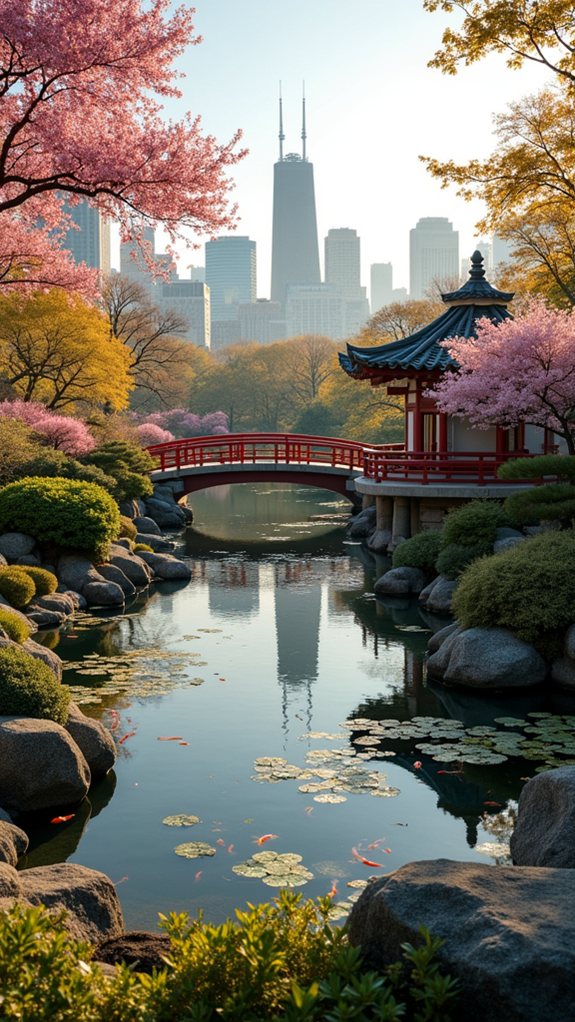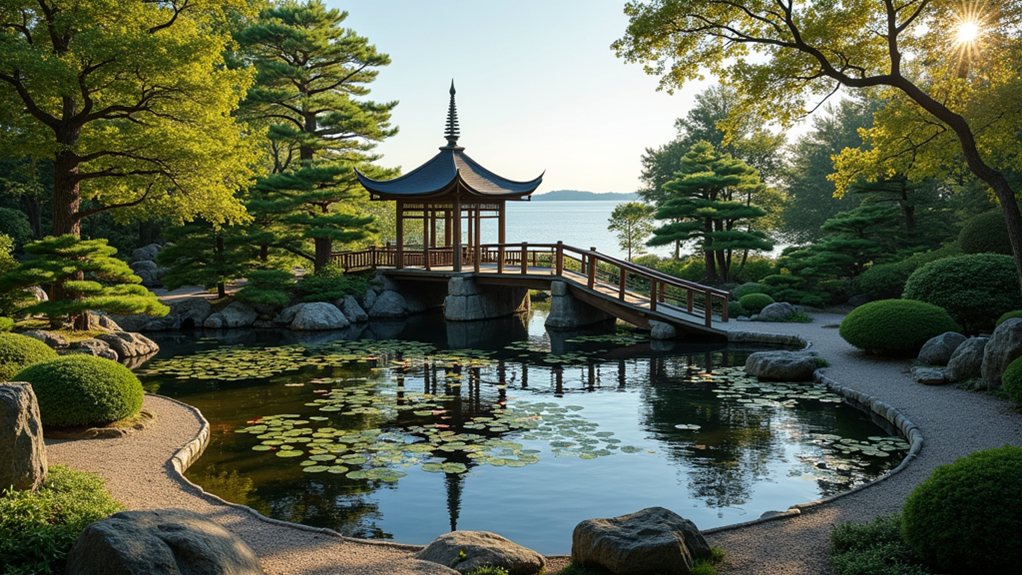The garden doesn’t actually sit in Japan, but rather on Chicago’s Wooded Island, where Eastern tranquility meets Midwestern practicality. Its reflective ponds and meticulously arranged stones tell the story of a 130-year-old cultural exchange, dating back to the 1893 World’s Fair when Japan gifted this serene landscape to the city. Visitors often miss this hidden gem, tucked away from Michigan Avenue’s commotion, yet those who find it uncover something unexpected—a place where Chicago’s architectural boldness harmonizes with Japanese minimalism in surprising ways.
A Tranquil Japanese Oasis in Chicago’s Heart

While tranquil waters ripple beneath ornate bridges, Japanese gardens offer visitors a sanctuary where time seems to slow down and worries fade away. These meticulously designed spaces, deeply rooted in Buddhist, Shinto, and Taoist philosophies, create environments where visitors can experience moments of peace and contemplation amid hustling city life.
The Garden of the Phoenix, situated on Chicago’s Wooded Island, stands as a living symbol of international friendship and cultural exchange. Originally gifted from Japan during the 1893 World’s Fair, this garden blends traditional Japanese aesthetic principles with a distinctly midwestern setting, creating a unique space where East meets West along Lake Michigan’s shore.
A cultural bridge spanning centuries, where Japanese tranquility meets Midwestern spirit along Chicago’s shimmering shore.
Visitors wandering through the garden encounter the three crucial elements of Japanese garden design: stone, symbolizing eternity; water, representing life and renewal; and carefully selected plants that maintain their beauty throughout Chicago’s dramatic seasonal changes. The garden employs a careful selection of evergreen varieties that provide different shapes, textures, and sizes throughout all seasons.
The garden’s zigzag bridges, designed to confound evil spirits who can only travel in straight lines, connect small islands across reflective ponds where koi fish dart beneath lily pads. The garden is conveniently located behind MSI, providing museum visitors with a perfect natural retreat after exploring indoor exhibits.
Traditional stone lanterns and pagodas dot the landscape, serving both decorative and symbolic purposes. These elements, along with meticulously raked gravel patterns that mimic flowing water, create a meditative atmosphere where visitors often find themselves slowing down, breathing deeper, and noticing details they might otherwise miss.
The garden’s maintenance follows centuries-old techniques, with gardeners treating their daily tasks as meditation practices. Each rake stroke across the gravel, each precise pruning cut, continues traditions that have been passed down through generations of master gardeners.
While similar in design to Kyoto’s famous gardens, the Chicago adaptation incorporates subtle nods to its Midwestern home, creating a living cultural bridge between Japan and America. Much like the wooded areas of Forest Park in Queens, this garden creates the illusion of being far removed from urban surroundings while remaining within city limits. The tranquil setting evokes the same sense of escape found in Pai, where breathtaking panoramas transport visitors away from the bustle of everyday life.
For those seeking respite from urban pressures, this hidden gem offers a rare opportunity to experience another culture’s approach to finding harmony with nature—proving that sometimes the most profound freedom can be found in the quiet spaces between our thoughts.






